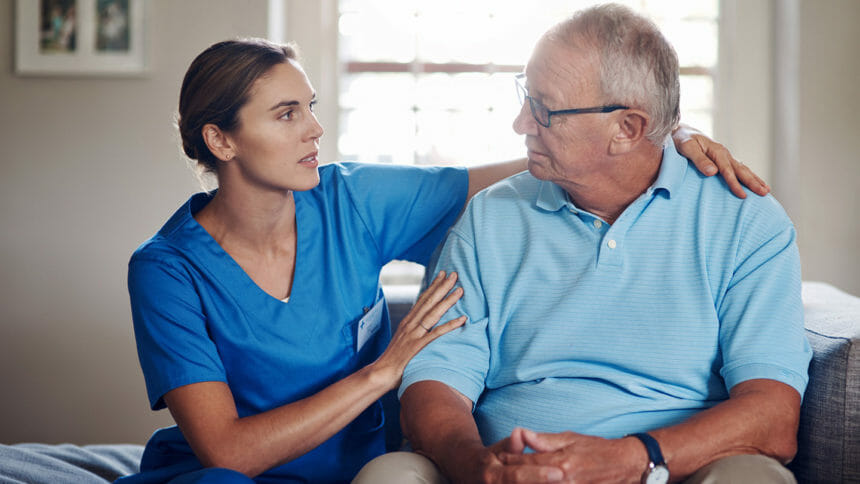Nursing home residents who use a hip protector are three times less likely to suffer fall-related hip fractures than those don’t use them, a new study found.
Patients who fell while not wearing the devices had rates of hip, pelvic and other fractures of 0.92, 0.21 and 0.71 per 100 falls, respectively. The rates of hip, pelvic and other fractures for residents who were wearing the devices during a fall were 0.33, 0.28, and 0.71 per 100 falls, respectively — a three-fold difference.
Falls-related injuries are a major point of concern for nursing home residents. Last month, providers called on members of the U.S. Senate Special Committee on Aging to consult with skilled nursing facilities when considering fall prevention policies.
Investigators said the findings show the benefits of using hip protectors “can be achieved in practice” and may have significant impacts on real-world decision making for providers.
“It is one thing to show effectiveness in a clinical trial, where a team of investigators work to maximize adherence,” the authors wrote. “Our study moves beyond the artificiality of the clinical trial environment, to examine the real-life value of hip protectors in reducing hip fractures in LTC homes from a region of (British Columbia) that had attained 60% adherence with hip protectors.”
Researchers used data from residents in 14 long-term care homes who experienced at least one recorded fall during a 12-month period.
The findings were published in the November issue of the Journal of Post-Acute and Long-Term Care Medicine.






